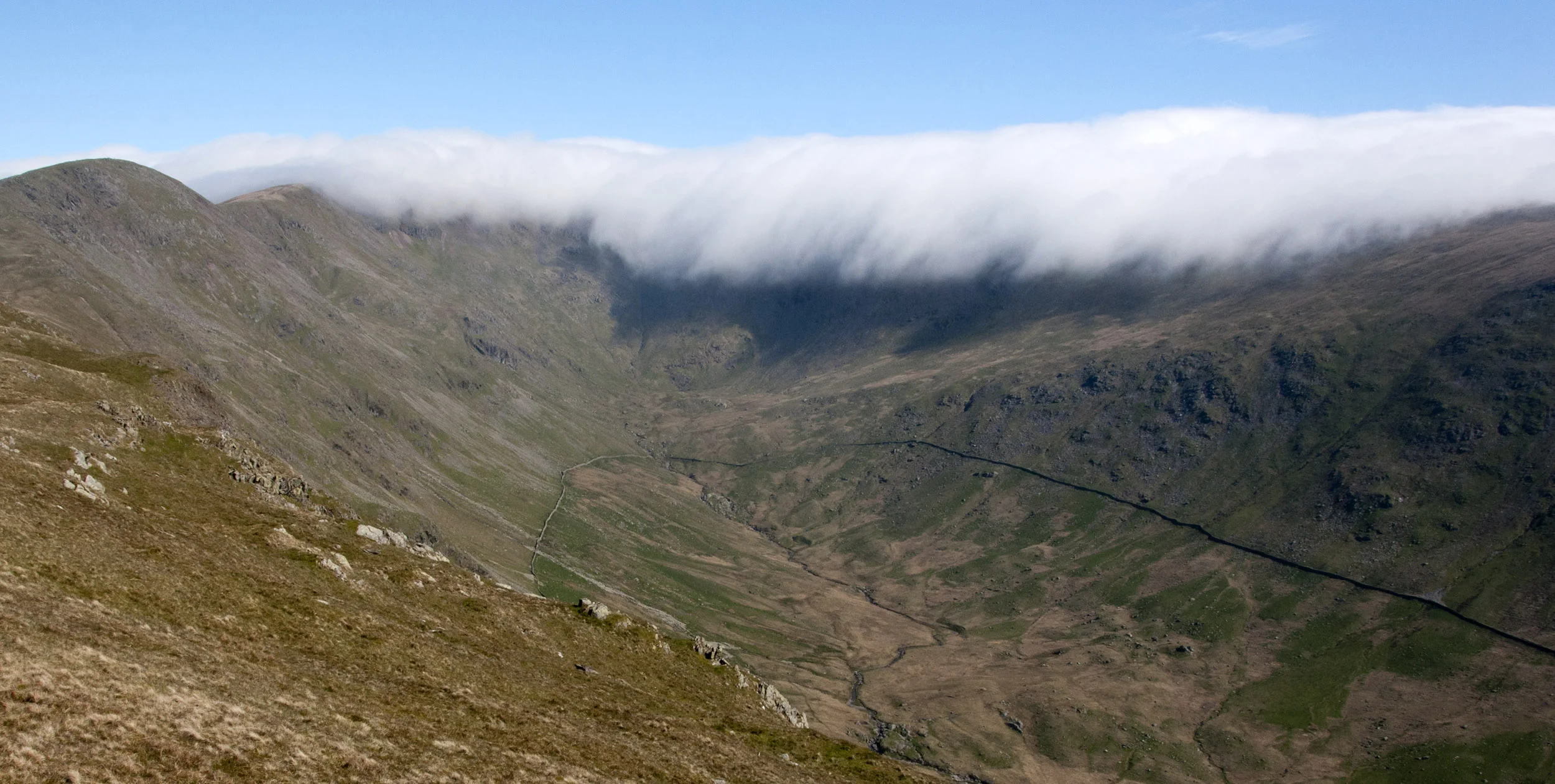A walk to the summit of Fairfield: Clouds and Neolithic stones on a Lake District mountain
I set out early this morning to walk up Fairfield, a great dome of a mountain in the central Lake District. The day dawned with clear skies and the early morning sun was warm, but as I gained height it looked like the summit was going to be shrouded in hill fog.
Views towards Fairfield (Photo: Aaron Watson)
This cloud was distinctive. While its internal structure moved quickly, the cloud bank itself was motionless, appearing rather like a waterfall or dry ice. It hung across the ridge for the entire day.
A short film of cloud pouring over the ridges of Fairfield (Film: Aaron Watson)
In only a few footsteps, I walked between crystal clear sunshine and the dark, cold interior of the cloud. The landscape was transformed. All long-distance views were gone.
Archaeologists have long known that Neolithic people visited the summit plateau of Fairfield. Nearby is a source of volcanic stone which can be shaped into stone tools. I had failed to find any evidence for these prehistoric prospectors on previous visits to the mountain. On this occasion, perhaps because the cloud had focused my eyes upon the ground, I found them.
Examining a Neolithic worked stone on the Fairfield plateau (Film: Aaron Watson).
Across the Lake District, Neolithic stone quarries often produced artefacts known as stone axes. The ephemeral scatters of worked stone here on Fairfield, however, represent such small quantities of material that it seems this outcrop may not have been suitable.
I replaced the flaked stone exactly where I had found it, and continued on my walk.
Soon after, I encountered a slab of outcropping rock with an interesting texture, which I captured using photogrammetry.
Photogrammetric model of the natural rock textures on Fairfield. (Model: Aaron Watson)
While natural in origin, some of the circular depressions on this rock share similarities with cup marks. Rock art has never been recorded at these altitudes in the Lake District, and there is no evidence to suggest that this panel has been artificially altered. But if my attention was drawn to it, perhaps the same might have happened with people in prehistory. I am very interested in how they might they have interpreted geological features.

